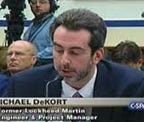How we will know Autonomous Vehicle makers have started using viable development and test methods
As the driverless vehicle industry continues its unfortunate and avoidable collapse, I thought I would point out the clear signs they made the necessary changes to right the ship.
Showing the most complex and dangerous scenarios they cannot and are too justifiably afraid to develop and test now work
This is the most critical sign. It would show the world the industry now has the capability to get to the end. Through that last 10% or so. It would demonstrate the industry finally gets it was doing everything backwards. That the real-world to proper simulation paradigm shift has occurred. If the proper (DoD not gaming) simulation technology is used, informed and validated by the real-world, I can now make a legitimate digital twin and replace the real-world to learn these scenarios. 6-lane cross merges, circles/round abouts and complex intersections. Once that is done the industry can earn the public’s trust by showing it can do the hardest things as well as demonstrate incremental due diligence. First you prove the tech works in simulation and the fidelity of that simulation has been validated. Then you involve humans in the testing by moving safety driving to test tracks and organized public trials where the public is not present. Once all this is done you migrate to the public domain.
Providing proof that the scenarios have been properly developed and tested and the simulation used is a legitimate digital twin
Hiding information, relying on black boxes and hyping has to stop. It builds distrust. AV makers should show the public what has been tested, the results which must include disengagements and root causes, in both real-world test areas as well as simulation. And prove the simulation used is a legitimate digital twin I every area. Those being exact physics modeling. Locations, active sensor world interactions including multiple mass radar reflections, handling massive complex scenarios in proper real-time and faster etc.
Create measurable standards
The argument that you must wait until the tech is sorted out and there are IP issues that may be exposed are prohibiting the creation of testable safety standards is nonsense. It is hype and a cop out. It builds distrust. Folks who do the right thing the right way seek the light of day — not dodge it. Tell me how a test that says — thou shall not run into stationary objects like firetrucks — requires sorting out the tech used or exposes IP?
More in my articles here. Including how to build a legitimate digital twin in simulation.
The Autonomous Vehicle Industry can be Saved by doing the Opposite of what is being done now to create this technology
Proposal for Successfully Creating an Autonomous Ground or Air Vehicle
Simulation can create a Complete Digital Twin of the Real World if DoD/Aerospace Technology is used
Autonomous Vehicle Industry Collapse Update 2- Add Zoox to the List
Autonomous Vehicles Need to Have Accidents to Develop this Technology
Using the Real World is better than Proper Simulation for AV Development — NONSENSE
My name is Michael DeKort — I am a former system engineer, engineering and program manager for Lockheed Martin. I worked in aircraft simulation, the software engineering manager for all of NORAD, the Aegis Weapon System, and on C4ISR for DHS.
Key Industry Participation
- Lead — SAE On-Road Autonomous Driving SAE Model and Simulation Task
- Member SAE ORAD Verification and Validation Task Force
- Member DIN/SAE International Alliance for Mobility Testing & Standardization (IAMTS) Sensor Simulation Specs
- Stakeholder for UL4600 — Creating AV Safety Guidelines
- Member of the IEEE Artificial Intelligence & Autonomous Systems Policy Committee (AI&ASPC)
- Presented the IEEE Barus Ethics Award for Post 9/11 Efforts
My company is Dactle
We are building an aerospace/DoD/FAA level D, full L4/5 simulation-based testing and AI system with an end-state scenario matrix to address several of the critical issues in the AV/OEM industry I mentioned in my articles below. This includes replacing 99.9% of public shadow and safety driving. As well as dealing with significant real-time, model fidelity and loading/scaling issues caused by using gaming engines and other architectures. (Issues Unity will confirm. We are now working together. We are also working with UAV companies). If not remedied these issues will lead to false confidence and performance differences between what the Plan believes will happen and what actually happens. If someone would like to see a demo or discuss this further please let me know.
